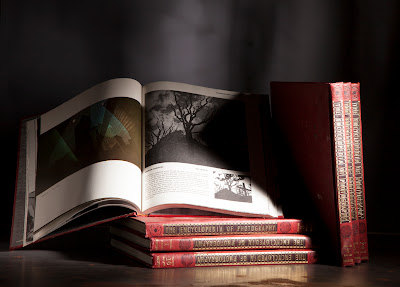This assignment will explore some of the important qualities of light. Generally, there are four: Color, Angle, Intensity and Character/Contrast. We will be concentrating on Angle and Character/Contrast for now.
Find an interesting subject that can be photographed on a table-top. Should be solid (relatively) non-glossy/shiny object.
The second part of this assignment will explore how to create an interesting background to compliment your subject. Background design is very important for creating a convincing image that "goes beyond the studio." Bring objects or paper cutouts for use in creating background effects—we will be using them to create GOBOs.
Reserve time in the lighting studio to build and light your shot(s). Shoot with strobes. Plan for at least 2 hours for the assignment. Working with your partner will make things much more productive.
In both exercises, strive to make the most artistically pleasing images as possible.
In both exercises, strive to make the most artistically pleasing images as possible.
Shoot your subject on a piece of seamless or an interesting flat material on the tabletop. Use paper (distressed, painted on, etc.), wood, sheet metal, or anything that will compliment your subject. Most likely, you will be shooting down on your subject. Use and trust your handheld light meter
Light source: Strobe with reflector, barn doors can be useful. Create a series of still life images that show a variation of:
- Angle of Light
- Character/Contrast (Explore hard vs. soft with direct and diffused sources)
- With and without reflecting fill card
 II. — Still life with distant background (lit separately as isolated, second plane)
II. — Still life with distant background (lit separately as isolated, second plane)Subject with designed low-key background. Place object on tabletop and shoot from the front at a low angle, so that the background becomes important in the image. The background should be at least 3 feet behind your subject—move the table toward the middle of the room. This exercise will use two light sources, one for the subject, one for the background.
General concerns:
- Use a low ISO, such as 200
- Shoot RAW, white balance set to strobe
- Shoot manual exposure mode
- Focus critically on the subject using manual focus
- Set shutter speed for 1/60 and forget it...all further exposure adjustments will be made with f-stop
- Design the intensity of the light so that you will be using a moderately wide aperture (say f5.6 or f8). This means the strobes will be turned down. Adjust the strobes down (or up) so that your meter delivers your desired f-stop.
- Move your camera further back from the subject and use a longer lens setting to produce desired framing. This helps reduce distortion of shapes, reduces flare, and helps separate the background
Main Light:
As in the first exercise (above), explore and shoot variations of light direction and intensity
As in the first exercise (above), explore and shoot variations of light direction and intensity
- Varied side or 45º light, shooting variations of angle and height
- Vary contrast (direct versus diffuse), shoot variations
- With and without fill, shoot variations
- Again, set the intensity of the strobe to fire to desired f-stop—generally the strobe will be turned down lower. Meter.
- Similar to last week, direct the main light with barn doors, flags (foam core) or grid so that it doesn't contaminate the background. Background isolation is important for this exercise
Background Light:
- Use barn doors and/or grid spot (10º or 20º)
- Set the light to be at least two stops underexposed. So, if your main light is firing at f8, lower the intensity of the background light so that it meters at f4 (or so). Important: when metering the background light, turn off the main light so that you get an uncontaminated reading
- Angle the light so that it rakes across the background at a low angle
Background Design:
The background will be a simple chiaroscuro effect that should complement the subject without being too distracting. We will have it be out of focus, due to the wider aperture, longer lens, and greater distance behind the subject. This will make it more impressionistic.
The background will be a simple chiaroscuro effect that should complement the subject without being too distracting. We will have it be out of focus, due to the wider aperture, longer lens, and greater distance behind the subject. This will make it more impressionistic.
- Use a piece of seamless, dark cloth, or other kind of dark material against the wall. Attach it so that it doesn't fall down. It will need to be fairly big (like seamless) to function as a backdrop
- Use GOBOs (objects, cutouts, etc.) in front of the light to create interesting shadow play on the background
- Be sure GOBOs themselves do not appear in the shot—we only want to see their shadows on the background
- For sharper shadows, bring object closer to the wall and/or the light further away
Shoot a wide variety of images, exploring the many factors above. Please bring files to next class.

No comments:
Post a Comment